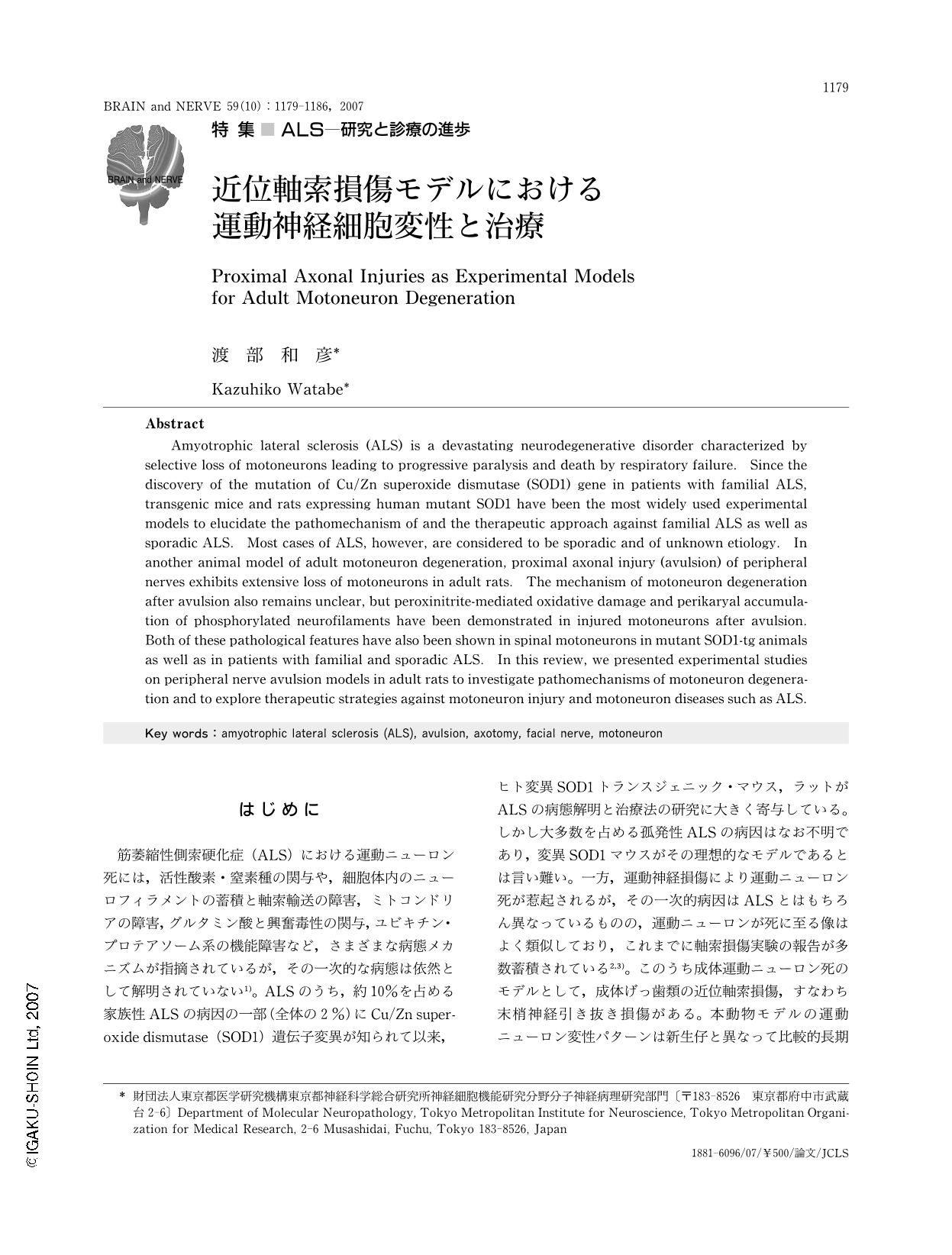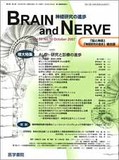Japanese
English
- 有料閲覧
- Abstract 文献概要
- 1ページ目 Look Inside
- 参考文献 Reference
はじめに
筋萎縮性側索硬化症(ALS)における運動ニューロン死には,活性酸素・窒素種の関与や,細胞体内のニューロフィラメントの蓄積と軸索輸送の障害,ミトコンドリアの障害,グルタミン酸と興奮毒性の関与,ユビキチン・プロテアソーム系の機能障害など,さまざまな病態メカニズムが指摘されているが,その一次的な病態は依然として解明されていない1)。ALSのうち,約10%を占める家族性ALSの病因の一部(全体の2%)にCu/Zn superoxide dismutase(SOD1)遺伝子変異が知られて以来,ヒト変異SOD1トランスジェニック・マウス,ラットがALSの病態解明と治療法の研究に大きく寄与している。しかし大多数を占める孤発性ALSの病因はなお不明であり,変異SOD1マウスがその理想的なモデルであるとは言い難い。一方,運動神経損傷により運動ニューロン死が惹起されるが,その一次的病因はALSとはもちろん異なっているものの,運動ニューロンが死に至る像はよく類似しており,これまでに軸索損傷実験の報告が多数蓄積されている2,3)。このうち成体運動ニューロン死のモデルとして,成体げっ歯類の近位軸索損傷,すなわち末梢神経引き抜き損傷がある。本動物モデルの運動ニューロン変性パターンは新生仔と異なって比較的長期間の経過をたどり,これまでに活性酸素・窒素種の関与や,細胞体におけるニューロフィラメントの蓄積が報告されており,ヒトALSとの形態学的,生化学的類似点が多い。本稿では,成体ラットの末梢神経引き抜き損傷モデルを用いた運動ニューロン損傷の解析と治療法のアプローチについて概説する。
Abstract
Amyotrophic lateral sclerosis (ALS) is a devastating neurodegenerative disorder characterized by selective loss of motoneurons leading to progressive paralysis and death by respiratory failure. Since the discovery of the mutation of Cu/Zn superoxide dismutase (SOD1) gene in patients with familial ALS, transgenic mice and rats expressing human mutant SOD1 have been the most widely used experimental models to elucidate the pathomechanism of and the therapeutic approach against familial ALS as well as sporadic ALS. Most cases of ALS, however, are considered to be sporadic and of unknown etiology. In another animal model of adult motoneuron degeneration, proximal axonal injury (avulsion) of peripheral nerves exhibits extensive loss of motoneurons in adult rats. The mechanism of motoneuron degeneration after avulsion also remains unclear, but peroxinitrite-mediated oxidative damage and perikaryal accumulation of phosphorylated neurofilaments have been demonstrated in injured motoneurons after avulsion. Both of these pathological features have also been shown in spinal motoneurons in mutant SOD1-tg animals as well as in patients with familial and sporadic ALS. In this review, we presented experimental studies on peripheral nerve avulsion models in adult rats to investigate pathomechanisms of motoneuron degeneration and to explore therapeutic strategies against motoneuron injury and motoneuron diseases such as ALS.

Copyright © 2007, Igaku-Shoin Ltd. All rights reserved.


